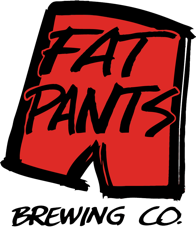New Years in April? New Beers Day was the day many people in the U.S. celebrated the partial repeal of prohibition on April 7, 1933 ahead of the complete end of prohibition in December of the same year. The 13 years of prohibition left beer aficionados and breweries alike high and dry, leading to some rather creative solutions for those that wanted to imbibe in alcoholic beverages.
If you lived in the Twin Cities a hundred years ago you would probably have been able to find alcohol in one of the five following places.
1. In Fun Flasks
The ban on alcohol in the U.S. led to the rise of some creative alcohol containers including hidden compartments in canes, drinking vessels looked like books, and flasks that could be strapped to the thigh and hidden by an overcoat. If you didn’t want to wear your alcohol, you could also hide bottles under your mattress or a specially made hollow lamp.
A “book” that was actually a flask
A hollow lamp was the perfect place to store bottles of spirits
2. In A Speakeasy
Even though drinking establishments were officially shut down with the start of prohibition, unofficially they continued to thrive in the form of speakeasies, which were underground drinking establishments ranging from shabby, hole-in-the-wall joints to multi-story swanky establishments with entertainment and hors d’oeuvres. Many of these establishments had ties to the mafia, including here in the Twin Cities. Back in the day, St. Paul was known as being a hotbed for mafia activity, which included bootlegging. Al Capone, John Dillinger, and "Baby Face" Nelson are just a few of the criminals that were known to be operating in the area at the time. Locations in the area associated with bootlegging include the Wabasha Caves and the Green Lantern Saloon at 525 Wabasha (now demolished).
Bootlegging Operation
TumblingRun/Flickr
3. In Plain Sight
What was a brewery to do when they suddenly couldn’t make beer? This was the question breweries had to ask themselves when prohibition started. Some breweries switched to making products like ice cream, milk or soda, the latter two being good options since they already had bottling and refrigeration equipment. Other breweries chose to pivot to non-alcoholic beer. The thing about NA beer though is that boiling out the alcohol is the last step in the beer-making process. Some breweries “accidentally” forgot this last step and had kegs on hand to carefully distribute through select channels.
1920s beer kegs
4. At Home
If you didn’t want to go to a speakeasy, but still wanted to drink in the 1920s you might have tried your hand at homebrewing. Many folks chose to homebrew beer during this time. Minnesota farmers, especially from German and Polish communities who were largely against prohibition, brewed for themselves and their neighbors.
Men in Eden Valley held up barrels of Minnesota 13 moonshine.
Minnesota Historical Society
5. In a Vehicle
Did you know that Nascar came out of prohibition? Bootleggers, also known as rumrunners, needed fast, powerful cars to outrun the law. When prohibition ended, many of these cars found a second life as race cars. Other rumrunners came up with clever disguises to fool the law, such as this “lumber” truck with a hidden storage space for alcohol, pictured below.
A truck hauling “lumber” had a hidden compartment







